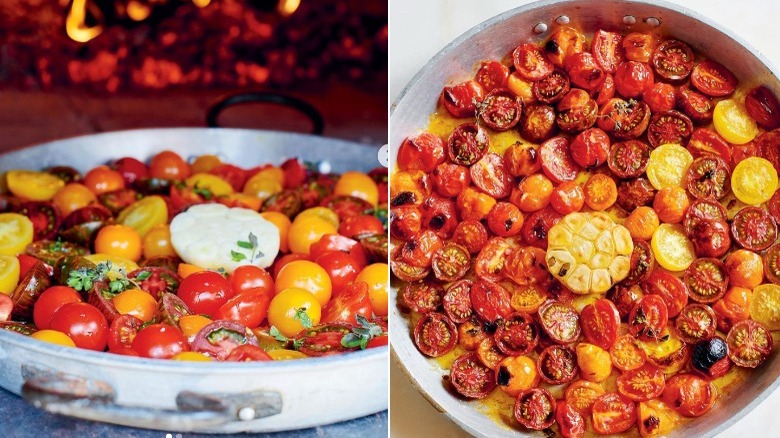How You Should Use Up Leftover Tomatoes, According To Jamie Oliver
One of the most rewarding trends of the pandemic (aside from giving life to sourdough starters) was building kitchen gardens. As families were looking for something to do together and groceries became scarce at supermarkets, people went back to basics, whether they had an apartment fire escape or an acre of land to dedicate to the garden.
According to Reuters, the global trend fueled agricultural companies like W. Atlee Burpee & Co., a 144-year-old seed company, to see record sales. If you were among new farmers supplementing your produce, chances are you planted tomatoes, the most popular home garden plant, per Almanac.
This hot weather crop has a long growing season lasting 60 to 100 days from seed to harvest, depending on the variety, placing the height of tomato season at the end of the summer between August and September. While we patiently waited all summer to see the sweet fruit develop on the vines and cherished the first tiny cherry tomato we grew with our hands, by September, the gangly plant had exploded with fruit, making it challenging to fully utilize.
While vine-ripened summer tomatoes are juicy and sweet at their peak, they need a little TLC toward the end of the season. Seeking to inspire home cooks to eat more plant-based meals and create less food waste, chef Jamie Oliver is using his platforms to show home cooks what to do with the shriveled pint of tomatoes on their counters (via Jamie Oliver Group).
Roast leftover tomatoes
Recently chef Jamie Oliver took to Instagram in a PSA to save all those end-of-the-summer tomatoes past their prime, too wrinkled and soft for a salad but still delicious. Using cherry tomatoes, Oliver halves the tomatoes before roasting them with olive oil, a head of garlic, fresh herbs and seasoning, and a "dash of red wine vinegar." According to The Kitchn, roasting "intensifies" the flavor of the tomato, arguably improving it with a "jammy and caramelized" texture, creating a delicious tomato broth as the fruit breaks down and marries with the other ingredients.
Oliver uses roasted tomatoes as the base for just about any dish with tomatoes, including pasta, risotto, and pizzas. Although he doesn't provide a recipe, Botanica Magazine suggests roasting any small tomato "ankle-deep in an olive oil pool" at 350 F until the tomatoes begin to burst, about 20 minutes. Once cooled, the tomatoes and their flavorful, garlicky juices will keep for two weeks in the refrigerator or freeze the tomatoes for another day, as Oliver suggests.
Roasting tomatoes is a good technique whenever you find tomatoes too bland to eat raw. Aside from vinegar, a drizzle of honey on the roasting tomatoes will also add sweetness to the out-of-season fruit allowing you to enjoy tomatoes all year long in a variety of recipes. Just another reason why you shouldn't throw away your overripe tomatoes.

